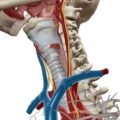Homelessness affects men, women and children of all races and ethnicities. On any given night, more than 610,000 persons in the United States are homeless. Approximately one third of these are families. Homeless persons are more likely to become ill, have greater hospitalization rates and are more likely to die at a younger age than the general population. The average lifespan for a homeless person is between 42 and 52 years. Homeless children are much sicker and have more academic and behavioral problems. Complex advanced medical problems and psychiatric illnesses, exacerbated by drug and alcohol abuse, are complicating factors. A case-controlled study embedded within a homeless service program collected the relevant information that included access and barriers to care. All the participants within the program claimed to have a disabling condition but only 18% of homeless people not within the program made the same claim. This suggested that provider communication may negatively impact an individual’s ability to transition from homelessness. A sample of 24 homeless participants were recruited in a Canadian city in 2005 and described their healthcare needs. Among the obvious concerns about physical and mental illness, addictions and stress, they reported that shelter life promoted spread of disease and lack of privacy. Also violence was rampant in shelters and on the streets, leading to constant fear. They wanted to work and to be housed, yet felt trapped in a dehumanizing system.
Homelessness and Malnutrition
It is logical to surmise that the homeless person’s diet is likely to be nutritionally deficient and yet there is a relative paucity in research regarding this issue with studies varying in both their methodology and in homeless populations. Diets of the homeless are frequently characterized as high in saturated fat and deficient in fiber and certain micronutrients, all of which can have negative implications for physical and/or mental health. The conclusion from intervention studies is that there is no consensus as to the most effective method for assessing dietary intake. A significant proportion of homeless people drink alcohol excessively and evidence for the range of nutritional deficiencies in the homeless, problem-drinking populations was reviewed. The reviewers found nine studies reporting nutritional deficiencies. The following nutrient deficiencies were reported across studies: vitamins B1, B2, B6, B9, B12, C, A and E. The commonest were vitamins B1 and C.
Problem-drinking in homeless and vulnerably housed people can lead to malnutrition, associated with alcohol-related brain damage from vitamin B1 deficiency. It is not clear whether interventions to improve nutritional status in this population have been effective. While public and private agencies provide nutritious food and meals for homeless persons, availability of the services to homeless persons is limited. Many homeless people are eligible for food stamps but do not receive them. More nutrition education needs to be available to them and to service providers The way homelessness and diabetes affect each other is not well known. A study in which semi-structured interviews with a sample of participants was reported. Social service providers were seen as peripheral to diabetes care although all saw their primary functions as valuable. Adapting the care of homeless persons with diabetes to include involvement of patients in medical and social service providers must be emergent and responsive to changing needs. Thiamine is an essential cofactor in carbohydrate metabolism and individuals with diabetes are thiamine (vitamin B1) deficient. The pathophysiology of thiamine deficiency is similar to that underlying atherosclerosis and the metabolic syndrome. Thiamine administration can prevent the formation of harmful byproducts of glucose metabolism.
Facing the Problem
The central cause of homelessness is obviously poverty and making ends meet. There is no better population example of the relationship between malnutrition and disease. The focal point for both homeless people and their providers is the expense of the naturally occurring food that should be the diet of all human beings. This organic diet contains the right ratio of calories to the noncaloric nutrients that enable the calories to be burned. Unfortunately it is virtually 100% certain that homeless people will be surviving on the cheapest foods that they can find, generally referred to as “junk”. The obvious thing about junk foods is that they provide calories but do not provide the non-caloric nutrients necessary for turning the calories into energy. In spite of vitamin enrichment by the food industry the ratio of calories to vitamin content is hopelessly high. I have referred to this as high calorie malnutrition, seemingly an oxymoron until the nature of this kind of malnutrition is properly understood.
The “Choked Engine Syndrome”
Many people will remember that we used to “choke” a car in starting the engine. This allowed a “rich gasoline mixture” to flood the cylinders. When the engine was warmed, the choke mechanism was automatically released but if it was not released, unburned hydrocarbons appeared in the exhaust pipe and engine performance declined precipitately, reflecting inefficient combustion. We have long assumed that malnutrition in general is always because of lack of calories as in many parts of the world. However, analagous to the choked engine, the concept of excess calories as a form of malnutrition comes from an understanding of oxidation, essentially the combination of oxygen with a fuel in the formation of energy. For normal combustion there must be an appropriate ratio of fuel concentration to that of available oxygen. In the body, thiamine and magnesium act like spark plugs in a car. They cause ignition (oxidation) of glucose that leads to energy production through a series of complex chemical reactions, all of which depend on other nutrients.
Perhaps we should “bring the mountain to Mohammed”. By supplying the noncaloric nutrients in the form of supplements, the calorie/vitamin RATIO would be DECREASED. It must be emphasized that the concentration of vitamins ingested by the homeless might be sufficient for normal oxidation of a healthy diet, but totally inadequate for the diet actually consumed. Americans have certainly been highly programmed to take pills in the form of medication. Perhaps they would accept an artificial replacement of the necessary vitamins and minerals in balancing their dietary equation. The cost of providing supplements of this nature might outweigh the cost of treating illnesses caused directly by this form of malnutrition. It might even apply to correcting the health of people that are addicted to their food in the form of sweet calories, for it is notoriously difficult to provide corrective nutritional advice to anyone, let alone those that need it most.
It should be noted that homeless children reportedly develop behavior problems, not too different from home-based American children. My clinical experience clearly showed this to be the result of sugar and fat ingestion, with thiamine/magnesium deficiency resulting in impaired energy metabolism in the brain. If young adults combine their malnutrition with alcohol and highly sweetened carbonated beverages, they can be expected to be thiamine deficient. The effect on their emotion inducing brain mechanisms is an irritability, a more easily induced emotion. It is not too far fetched to suggest that this could easily result in violent behavior. Maybe school shooters, any of the people provoked to murder and the homeless, all have this form of malnutrition in common, and giving rise to biochemical brain disorder that is totally unresearched. No reporter on the scene of one of the many incomprehensible school shootings has ever been noted to request dietary information from parents of a school shooter, a potentially important factor that would suggest reflexive behavior that would exclude the unknown mystery of consciously motivated action.
We Need Your Help
More people than ever are reading Hormones Matter, a testament to the need for independent voices in health and medicine. We are not funded and accept limited advertising. Unlike many health sites, we don’t force you to purchase a subscription. We believe health information should be open to all. If you read Hormones Matter, like it, please help support it. Contribute now.













Thank you for this piece of writing Dr. Lonsdale. I have been working with the homeless at a student based medical clinic and will share with the doctors.
On the subject of violence, I saw an old interview with Jeffrey Dahmer, the serial killer, and took note that not only did he have a history of alcoholism that started in his teenage years but he worked in a chocolate factory. Those were both very interesting notes to me when thinking about how thiamine deficiency most likely played a role in his mental illness.
That is fascinating! Unfortunately it will not even dent the scenario